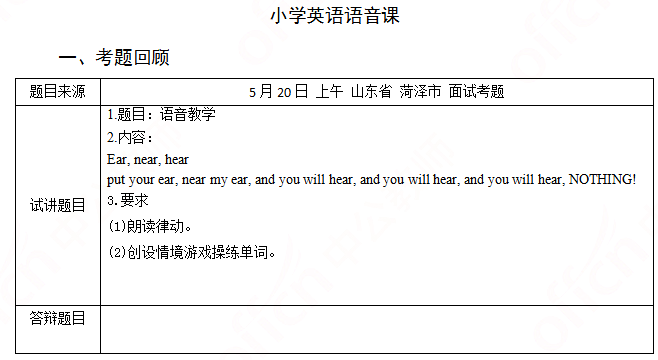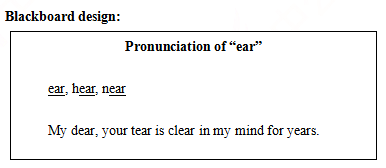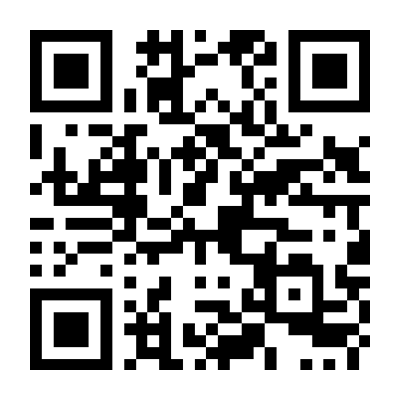问答题
0分

二、考题解析
【教案】
Teaching aims:
Knowledge aim: Students will master the sentence pattern and new words such as: My birthday is in…, January, February and so on.
Ability aim: Students will improve their speaking ability through group work
Emotional aim: Students will take part in the class actively and be fond of learning English.
Key and difficult point:
master the meaning of the sentence pattern and new words.
speak freely in class and improve their speaking skill.
Teaching procedure:
Step 1: Warming-up
Greeting the Ss + today is Kelly’s birthday, sing the birthday song;
Step 2: Presentation
Use calendar to teach the words about month. Teach the sentence pattern “my birthday is in…” by asking, “When is your birthday?”
Step 3: Practice
Mechanical drilling: Play Bomb game to practice the pronunciation.
Meaningful drilling: categorize 12 month into 4 groups according to the season. Picture to present seasons might be used.
Step4: Production
Making a conversation asking“when is your birthday?”

二、考题解析 【教案】 Teaching aims: Knowledge aim: Students will master the sentence pattern and new words ...

二、考题解析
【教案】
Teaching aims:
Knowledge aim: Students will master the sentence pattern and new words such as: My birthday is in…, January, February and so on.
Ability aim: Students will improve their speaking ability through group work
Emotional aim: Students will take part in the class actively and be fond of learning English.
Key and difficult point:
master the meaning of the sentence pattern and new words.
speak freely in class and improve their speaking skill.
Teaching procedure:
Step 1: Warming-up
Greeting the Ss + today is Kelly’s birthday, sing the birthday song;
Step 2: Presentation
Use calendar to teach the words about month. Teach the sentence pattern “my birthday is in…” by asking, “When is your birthday?”
Step 3: Practice
Mechanical drilling: Play Bomb game to practice the pronunciation.
Meaningful drilling: categorize 12 month into 4 groups according to the season. Picture to present seasons might be used.
Step4: Production
Making a conversation asking“when is your birthday?”

参考解析:





 百度扫一扫练题
百度扫一扫练题
 关注千题库公众号
关注千题库公众号








